#Sahasranama Classes online
Explore tagged Tumblr posts
Text
Exploring the Divine: The Practice of Devi Upasna
In the vast landscape of Hindu spirituality, Devi Upasna holds a special place. Devi, meaning “Goddess” or “Divine Mother,” represents the feminine cosmic energy, often personified as various goddesses like Durga, Kali, Lakshmi, Saraswati, and many more. Devi Upasna, or the worship of the Goddess, is a profound spiritual practice that enables individuals to connect with the divine feminine and…
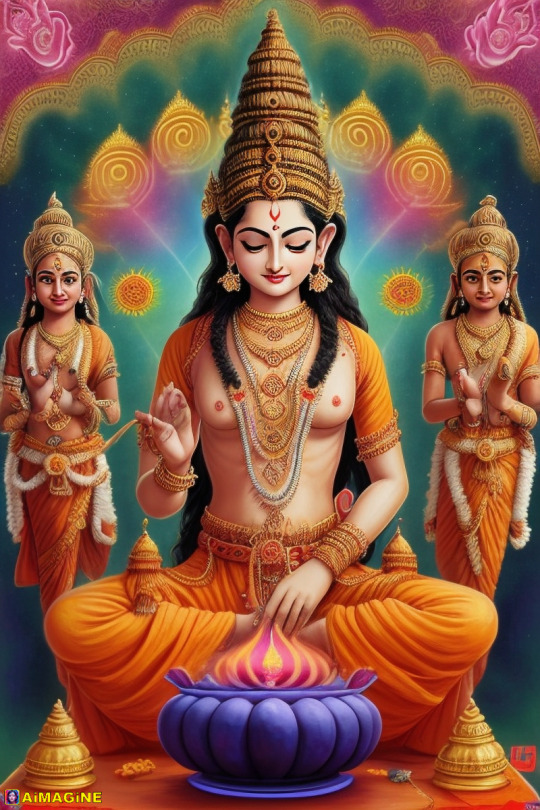
View On WordPress
#Cosmic Feminine#Devi Upasna#Devi worship#Hinduism#lalitha Sahasranama#Laltha Sahas8 classes online#Shaktham#Shakthi Upasna#Sri Vidya#Sri Vidya Upasna
4 notes
·
View notes
Text
"Embark on a Spiritual Journey: Learn Sanskrit Stotra Online"

In the bustling digital age, the pursuit of spiritual growth and enlightenment has found a new avenue – online Learn Sanskrit stotra online. These virtual platforms offer seekers from all walks of life the opportunity to delve into the profound world of Sanskrit hymns and prayers, unlocking the essence of devotion and transcendence.
Sanskrit stotras, revered for their poetic beauty and spiritual depth, serve as pathways to connect with the divine. Whether it's the melodious verses of the Vishnu Sahasranama or the heartfelt invocations of the Shiva Tandava Stotram, each stotra carries a unique resonance that uplifts the soul and awakens the spirit.
Through learn Sanskrit stotra online classes, learners can explore the intricacies of pronunciation, meaning, and interpretation under the guidance of experienced instructors. Utilizing interactive tools and multimedia resources, these classes provide a dynamic learning environment where students can immerse themselves in the sacred sounds and vibrations of Sanskrit.
One of the greatest advantages of learning Sanskrit stotras online is the flexibility it offers. With courses tailored to accommodate various schedules and commitments, participants can engage in their spiritual studies at their own pace and convenience. Whether you're a busy professional, a dedicated student, or a homemaker, online stotra classes provide a gateway to spiritual enrichment that fits seamlessly into your lifestyle.
Moreover, online Sanskrit stotra classes foster a sense of community and camaraderie among fellow seekers. Through virtual forums, discussion groups, and live sessions, participants can share insights, experiences, and reflections, creating a supportive network of like-minded individuals united in their quest for spiritual awakening.
By embracing the opportunity to learn Sanskrit stotras online, you not only deepen your connection to the divine but also contribute to the preservation and propagation of ancient wisdom and culture. Join us on this transformative journey of self-discovery and transcendence, and experience the profound joy and fulfillment that comes from chanting the sacred hymns of Sanskrit."
for more information
0 notes
Text
What is Ekadashi? Is it auspicious?
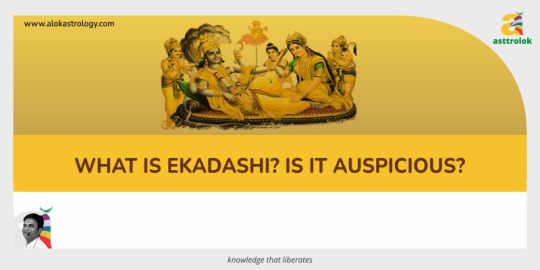
Ekadashi is the eleventh day or tithi of the lunar phase, it is also known to be an auspicious day to worship lord Vishnu. Ekadashi signifies eleven (‘eka’ means one, and ‘das’ means ten). The Ekadasi day is a significant day for Hindus dedicated to Lord Vishnu. People observe fast for an entire day. Ekadashi fasting is known as Ekadashi Vrat/Vrutam, and because this day happens twice a month (in the waxing and waning phases), devotees can observe two Ekadashi Vrats in a month.
What are the benefits of Ekadashi fasting? Get an online astrology consultation by the world-renowned Astrologer Mr. Alok Khandelwal.
Every Ekadashi is an occasion for spiritual seekers to step up their devotional service. According to the Vedic teachings, on this day, one should fast completely without drinking water. It should be a day with little or no worldly concerns, and those who maintain proper Ekadashi Vrat can free themselves of the harmful influences of the planets and malevolent ideas. Such restraint has enormous spiritual advantages and provides the necessary peace of mind.
Ekadashi Vrat
The Ekadashi Vrat begins at dawn and finishes with daybreak the next day. It should be conducted on a day that is not affected by Dashami, or the tenth lunar day. Fasting can be observed on the eleventh tithi/Dashami if it concludes 96 minutes before dawn. If the Dashami does not conclude 96 minutes before dawn, devotees should begin the Ekadashi fasting at the following sunrise.
Everyone between the ages of eight and eighty is advised to fast completely on Ekadashi, regardless of gender or social class. Those who are unable to stomach such austerity might observe Ekadashi Vrat by eating only once, either at midday or in the evening. However, food items considered banned on Ekadashi should not be consumed.
Read Also:- What is the Significance of Fasting?
How to observe Ekadashi Vrat?
Ekadashi Vrat begins with sunrise, one should get up early and worship Lord Vishnu with a light, incense stick, and Tulsi leaves picked a day before.
Afull fast is encouraged, one might begin fasting at sundown the previous day to guarantee that no undigested food remains in the stomach.
Paying a visit to a Vishnu temple and chanting Sri Vishnu Sahasranama will assist to strengthen the spiritual drive.
Those who are unable to fast completely can eat once. However, one should take care to eat only those foods that are not prohibited on Ekadashi.
Avoid non-veg meals, meat, fish, eggs, etc., mushrooms, intoxicants like tobacco and liquor, and beverages like tea, coffee, cola, and other energy drinks.
To conclude the Ekadashi Vrat, one can take a bath the next morning (Dwadasi), worship Lord Vishnu, and break the fast during the Parana hour, which varies per Dwadasi.
Fresh and dried fruits, vegetables, nuts and nut oils, milk, coconut, cassava, potato, sweet potato, buckwheat, olive, sugar, rock salt, pepper, ginger, and so on are permitted on Ekadashi.
All grains, peas, beans, tulsi, tamarind, custard, sesame seeds, mustard, salt, baking soda, baking powder, asafoetida, cloves, fenugreek, cardamom, nutmeg, fennel, and other spices should be avoided.
To reap the full benefits of Ekadashi Vrat, one should fast completely or eat just water. A devotee might break the Ekadashi fast by eating fruits and slowly rehydrating the body. Those who are unable to fast completely due to medical reasons may consume a single meal of authorized items such as fruits, roots, milk, almonds, and so on.
The main purpose of fasting is to ingest just what is absolutely necessary. Chanting prayers engages the mind, preventing it from succumbing to the demands or temptations of the body and senses. Those who are new to Ekadashi Vrat might attempt to complete a shorter fast. He/she may eat a single meal of authorized foods or Anukalpa (the non-grain Ekadashi prasad). By completing the shorter fasts successfully, one might progressively gain the strength and willpower needed to observe a water fast or a total fast. Devotees who observe a severe fast should not be proud of their accomplishments or try to flaunt their austerities. The propensity to talk about austerity should be managed and avoided.
Spiritual Importance
It is said that devotional rituals done on Ekadashis are more powerful. Devotees should view each Ekadasi as a chance to grow on their spiritual journey. Observing the Vrat and participating in poojas and kirtans assist devotees in freeing their minds from material cravings. The key to accomplishing the spiritual objective is to have the strength to bear the austerities and to resist emotional and sensual temptations. The main premise of Ekadashi Vrat is to avoid not just food but also the demands of the body and senses. It also involves inhibiting sexual cravings. Human existence is designed to be lived in such a way that it avoids food, sex, and other material needs. Devotees can purify themselves both inside and outward by doing so.
Read Also:- Who is Kuber the God of wealth?
#astrology#asttrolok#Ekadashi#Ekadashi Vart#Vart#meaning of fasting#Meaning of Ekadashi#benefits of Ekadashi fasting#Ekadashi Vrat 2023#astrologer#astrology consultation
0 notes
Text
Understanding Saguna and Nirguna Brahman in Hinduism
Detailed Explanation of Nirguna Saguna and Sahasranama.
Introduction To Nirguna Saguna Sahasranama Aradhana. Saguna means “with attributes.” Nirguna means “without attributes.” “Saguna Brahman” describes a God with (tangible) attributes. The term “Nirguna Brahman” describes a God with no (tangible) attributes. One with Attributes, qualities,Saguna.The other Nirguna, without Attributes,Nirguna.The western thought explores the Universe through what is…
#விஷ்ணு சஹஸ்ரநாமம் ஆன்லைன் Lalitha Sahasranama Class Online#Birth Vishnu Sahasranama#Nirguna aradhana#Nirguna Brahman#Saguna Aradhana#Saguna Brahman#Sree Lalitha Sahasranama#Vedas
0 notes
Text
Sloka Online Classes
Sri Andal Rangamannar Srivilliputhur Sri Lalitha Devi Ganesa

View On WordPress
#Basic Slokas for Children#Online classes#spirituality#Sri Lalitha Sahasranama Class Online#Summer courses#Vacation classes#Vishnu Sahasranama Online Classes
0 notes
Text
Sri Vishnu Sahasranama Chanting With Palasruthi
hariḥ ōmviśvaṃ viṣṇurvaṣaṭkārō bhūtabhavyabhavatprabhuḥ ।bhūtakṛdbhūtabhṛdbhāvō bhūtātmā bhūtabhāvanaḥ ॥ 1 ॥pūtātmā paramātmā cha muktānāṃ paramāgatiḥ ।avyayaḥ puruṣaḥ sākṣī kṣētrajñō’kṣara ēva cha ॥ 2 ॥yōgō yōgavidāṃ nētā pradhāna puruṣēśvaraḥ ।nārasiṃhavapuḥ śrīmān kēśavaḥ puruṣōttamaḥ ॥ 3 ॥sarvaḥ śarvaḥ śivaḥ sthāṇurbhūtādirnidhiravyayaḥ ।sambhavō bhāvanō bhartā prabhavaḥ prabhurīśvaraḥ ॥ 4…
View On WordPress
#விஷ்ணு ஸ்லோகங்கள்#ஶ்ரீ விஷ்ணு சஹஸ்ரநாமம் விளக்கம்#Sri Vishnu Sahasranama Chanting#Sri Vishnu Sahasranama Classes online#Vishnu sahasranama விஷ்ணு சஹஸ்ரநாமம்
1 note
·
View note
Text
Sri Lalitha Sahasranama Chanting Poorva Bhaga
View On WordPress
#லலிதா சஹஸ்ரநாமம் பாராயணம்#Lalitha Sahasranama Chanting#Lalitha Sahasranama Class Online#Lalitha Sahasranama lyrics#Lalitha Sahasranama text#SRI Lalitha Sahasranama
0 notes
Text
"Embark on a Spiritual Journey: Learn Sanskrit Stotra Online"
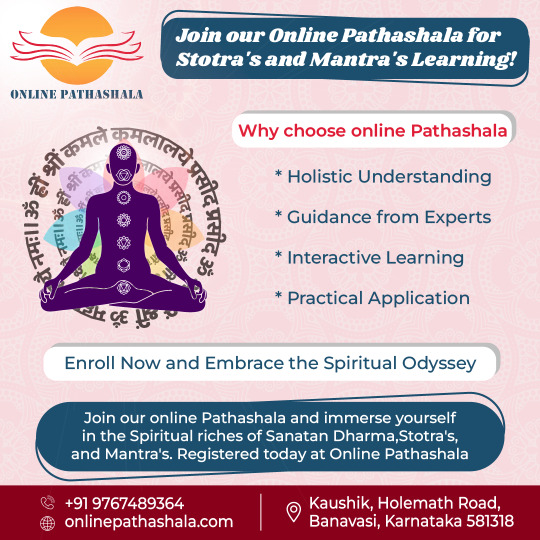
In the bustling digital age, the pursuit of spiritual growth and enlightenment has found a new avenue – online Sanskrit stotra classes. These virtual platforms offer seekers from all walks of life the opportunity to delve into the profound world of Sanskrit hymns and prayers, unlocking the essence of devotion and transcendence.
Sanskrit stotras, revered for their poetic beauty and spiritual depth, serve as pathways to connect with the divine. Whether it's the melodious verses of the Vishnu Sahasranama or the heartfelt invocations of the Shiva Tandava Stotram, each stotra carries a unique resonance that uplifts the soul and awakens the spirit.
Through online Sanskrit stotra classes, learners can explore the intricacies of pronunciation, meaning, and interpretation under the guidance of experienced instructors. Utilizing interactive tools and multimedia resources, these classes provide a dynamic learning environment where students can immerse themselves in the sacred sounds and vibrations of Sanskrit.
One of the greatest advantages of learning online Sanskrit stotras online is the flexibility it offers. With courses tailored to accommodate various schedules and commitments, participants can engage in their spiritual studies at their own pace and convenience. Whether you're a busy professional, a dedicated student, or a homemaker, online stotra classes provide a gateway to spiritual enrichment that fits seamlessly into your lifestyle.
Moreover, online Sanskrit stotra classes foster a sense of community and camaraderie among fellow seekers. Through virtual forums, discussion groups, and live sessions, participants can share insights, experiences, and reflections, creating a supportive network of like-minded individuals united in their quest for spiritual awakening.
By embracing the opportunity to learn online Sanskrit stotras online, you not only deepen your connection to the divine but also contribute to the preservation and propagation of ancient wisdom and culture. Join us on this transformative journey of self-discovery and transcendence, and experience the profound joy and fulfillment that comes from chanting the sacred hymns of Sanskrit."
for more information
0 notes
Text
"Embark on a Spiritual Journey: Learn Sanskrit Stotra Online"

In the bustling digital age, the pursuit of spiritual growth and enlightenment has found a new avenue – online Sanskrit stotra online. These virtual platforms offer seekers from all walks of life the opportunity to delve into the profound world of Sanskrit hymns and prayers, unlocking the essence of devotion and transcendence.
Sanskrit stotras, revered for their poetic beauty and spiritual depth, serve as pathways to connect with the divine. Whether it's the melodious verses of the Vishnu Sahasranama or the heartfelt invocations of the Shiva Tandava Stotram, each stotra carries a unique resonance that uplifts the soul and awakens the spirit.
Through online Sanskrit stotra classes, learners can explore the intricacies of pronunciation, meaning, and interpretation under the guidance of experienced instructors. Utilizing interactive tools and multimedia resources, these classes provide a dynamic learning environment where students can immerse themselves in the sacred sounds and vibrations of Sanskrit.
One of the greatest advantages of learning Sanskrit stotras online is the flexibility it offers. With courses tailored to accommodate various schedules and commitments, participants can engage in their spiritual studies at their own pace and convenience. Whether you're a busy professional, a dedicated student, or a homemaker, online stotra classes provide a gateway to spiritual enrichment that fits seamlessly into your lifestyle.
Moreover, online Sanskrit stotra classes foster a sense of community and camaraderie among fellow seekers. Through virtual forums, discussion groups, and live sessions, participants can share insights, experiences, and reflections, creating a supportive network of like-minded individuals united in their quest for spiritual awakening.
By embracing the opportunity to learn Sanskrit stotras online, you not only deepen your connection to the divine but also contribute to the preservation and propagation of ancient wisdom and culture. Join us on this transformative journey of self-discovery and transcendence, and experience the profound joy and fulfillment that comes from chanting the sacred hymns of Sanskrit."
for more information
0 notes
Text
"Embrace Spiritual Enrichment with Online Stotra Classes"

in today's fast-paced world, finding moments of tranquility and spiritual connection can be challenging. However, with the rise of online stotra classes, seekers of inner peace and divine harmony can now access ancient prayers and hymns from the comfort of their own homes.
Stotras, or devotional hymns, hold a special place in Hindu spirituality. They are poetic expressions of reverence and devotion to various deities, each carrying its own unique vibration and significance. From the powerful chants of the Hanuman Chalisa to the melodious verses of the Lalita Sahasranama, stotras offer a profound means of connecting with the divine.
Online stotra classes provide a structured platform for individuals to learn and recite these sacred hymns under the guidance of experienced teachers. Through live or pre-recorded sessions, students can delve into the meaning and significance of each verse, as well as learn proper pronunciation and intonation.
One of the key advantages of online stotra classes is their accessibility. Regardless of geographical location or time constraints, participants can access teachings and resources at their convenience. This democratization of spiritual learning allows individuals from diverse backgrounds to engage in the practice of stotra recitation, fostering a global community united in devotion.
Moreover, online stotra classes cater to learners of all levels, from beginners to advanced practitioners. Whether seeking solace in times of distress or aiming to deepen one's spiritual practice, these classes offer a supportive environment for personal growth and transformation.
In addition to their spiritual benefits, online stotra classes serve as a means of cultural preservation. By imparting knowledge of ancient texts and traditions, they contribute to the continuity and appreciation of India's rich cultural heritage.
As we navigate the complexities of modern life, online stotra classes stand as beacons of hope and inspiration, guiding us towards inner peace and spiritual fulfillment. By embracing the timeless wisdom encapsulated in these devotional hymns, we embark on a journey of self-discovery and divine communion. Join us in this sacred endeavor and unlock the transformative power of stotra recitation."
for more information
0 notes
Text
Sri Lalitha Sahasranama Introduction Lecture
Sri Lalitha Sahasranama Introduction Lecture. Though Hinduism advocates The Realization of the Self, which is a Principle beyond Attributes, Hinduism recommends the worship of gods in the form of Idols. In this sense in Hinduism, God exists in Form and at the same time does not. For details read my post ‘God Exis, Yes And No’ Worship of Gods in Human forms that in a form which one likes is a…
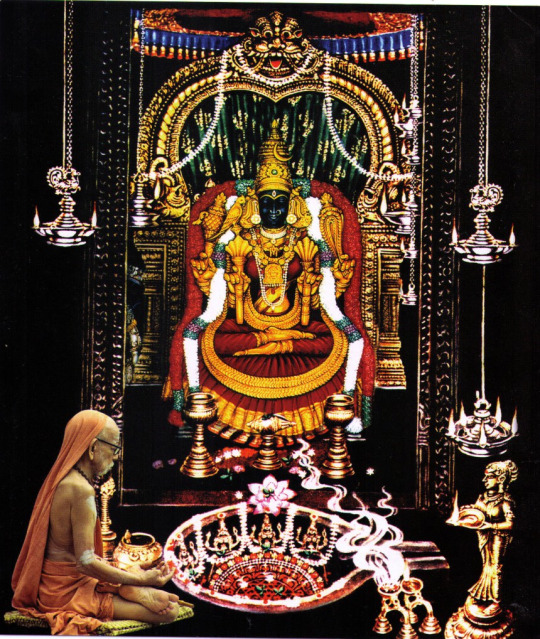
View On WordPress
#லலிதா சஹஸ்ரநாமம் ஆன்லைன்#Sahasranama Classes online#Sloka Teaching Slokas Online#spirituality#Sri Lalita Sahasranama classes#Sri Lalitha Sahasranama Class Online#urban Pro#Vedas Online
0 notes
Text
Sri Vishnu Sahasranama Classes OnLine
Sri Vishnu Sahasranama Classes OnLine
Sri Vishnu Sahasranama is one of the most powerful Mantras along with Lalitha Sahasranama. Vishnu Sahasranama was revealed in the presence of Sri Krishna in the Mahabharata Battlefield This maha mantra contains one Thousand and Eight names of Sri. Vishnu.As it’s palasuthi says by reciting Sri Brahmins shall gain knowledge ,Kshatriyas Victory Vaisyas Wealth and Sudras Pleasure. More than anything…
View On WordPress
#விஷ்ணு சஹஸ்ரநாமம் ஆன்லைன்#விஷ்ணு சஹஸ்ரநாமம் விளக்கம்#Religion and Spirituality#Sahasranama Classes online#Sri Vishnu Sahasranama#Sri Vishnu Sahasranama Classes online
0 notes
Text
Vishnu IS,IS NOT, Beyond Three Sankalpa
Sri Vishnu Sahasranama Slokas 51 to 56 Lecture Categories Select Category Afghanistan (42) animals (36) Astrophysics (348) Attitudes (14) audio (64) Australia (19) banks (57) Behavior (283) Bhakti (70) Blacks (5) Blogging (43) books (7) Business (159) China (66) Chritianity (11) comments (2) Communism (7) consumer…

View On WordPress
#ஶ்ரீ விஷ்ணு சஹஸ்ரநாமம் ஸ்லோகம் விளக்கம்#Bishnu Sahasranama Lecture#Hinduism#Sri Vishnu Sahasranama Classes#SRI Vishnu Sahasranama Online#Vishnu Sahasranama explained#Vishnu Sahasranama sloka 51#Vishnu Sahasranama Slokas lecture
2 notes
·
View notes
Text
Introduction To Sri Vishnu Sahasranama Audio
If you would like to join please click the link above or contact [email protected] or Whatsapp+919480591538
I have, as indicated in my earlier posts, started classes on Sri Vishnu Sahasranama from March.Along with it, following classes are also on. Vedas Upanishads Sahasranama Courses Online If you would like to join please click the link above or contact [email protected] or Whatsapp+919480591538 Here below is a part of introduction to Sri Vishnu Sahasranama. Introduction to Sri Vishnu Sahasranama
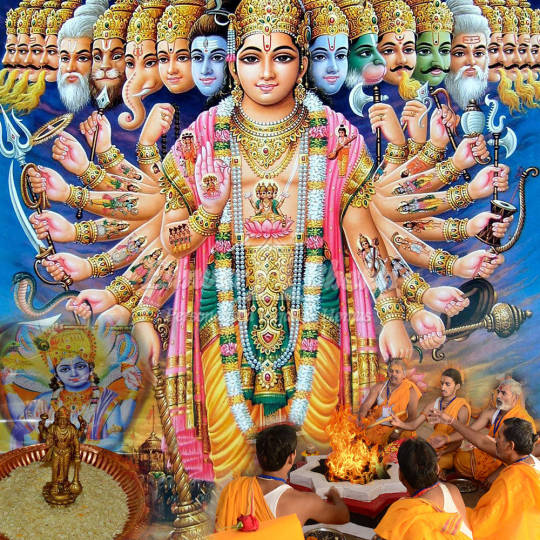
View On WordPress
#விஷ்ணு சஹஸ்ரநாமம் ஆன்லைன்#வேதம் ஆன்லைன்#Sloka Classes Online#Slokas online#Sri Vishnu Sahasranama Classes online#Vedas#Vedas Online#Vishnu Sahasranama Classes
2 notes
·
View notes
Text
Vishnu Sahasranama Slokas Tamil Lecture 14,15 ,16
Sri Vishnu Sahasranama Slokas 14,15,16 Explanation in Tamil Sarvagah Sarvavidbhanuh Vishvakseno Janardanah |Vedo Vedavidavyango Vedango Vedavit Kavih 14 Lokaadhyakshah Suraadhyaksho Dharmaadhyakshah Kritaakritah |CaturAtma Catur-vyuhas_Catur-damshtrah Catur-bhujah ||15|| Bhraajishnur Bhojanam Bhoktaa Sahishnur Jagadaadijah |Anagho Vijayo Jetaa Vishvayonih Punarvasuh…

View On WordPress
#Religion and Spirituality#Sahasranama sloka 15#Sloka Classes Online#Sri Vishnu Sahasranama Slokas online#Vishnu sahasranama Audio#Vishnu Sahasranama chanting#Vishnu Sahasranama Slokas 14#Vishnu sloka 16
1 note
·
View note
Text
Sri Vishnu Sahasranama Rishi Chandas Nyasa Tamil Lecture
Nyasa Rishi Chandas Vishnu Sahasranama Explanation
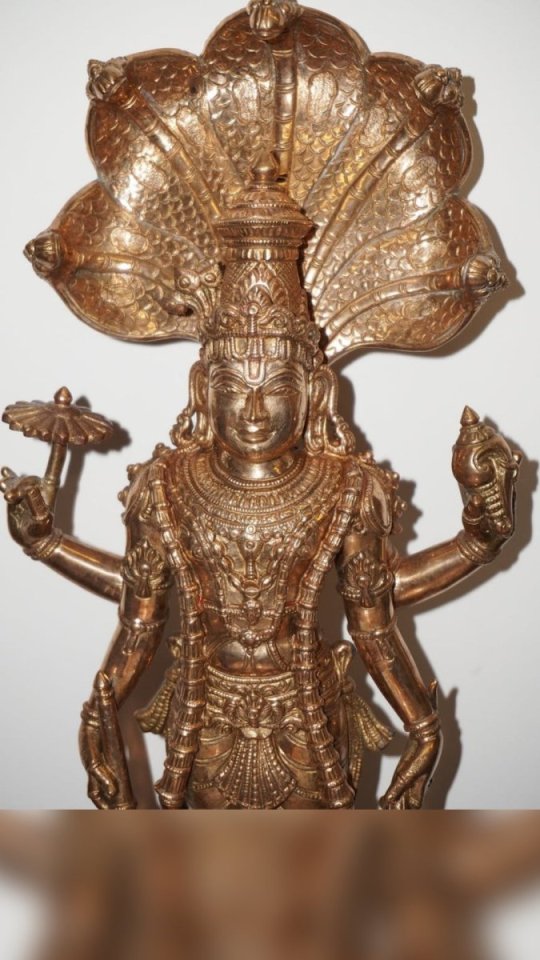
View On WordPress
#ஞாசம் விளக்கம்#ரிஷி விளக்கம்#விஷ்ணு சஹஸ்ரநாமம் உபன்யாசம்#ஶ்ரீ விஷ்ணு சஹஸ்ரநாமம் ஆன்லைன் வகுப்புகள்#ஶ்ரீ விஷ்ணு சஹஸ்ரநாமம் விளக்கம்#nyasa explanation#Rishi Chandas#Sri Vishnu Sahasranama Classes online#Sri Vishnu Sahasranama Slokas Explained#Vishnu Sahasranama Lectures
0 notes